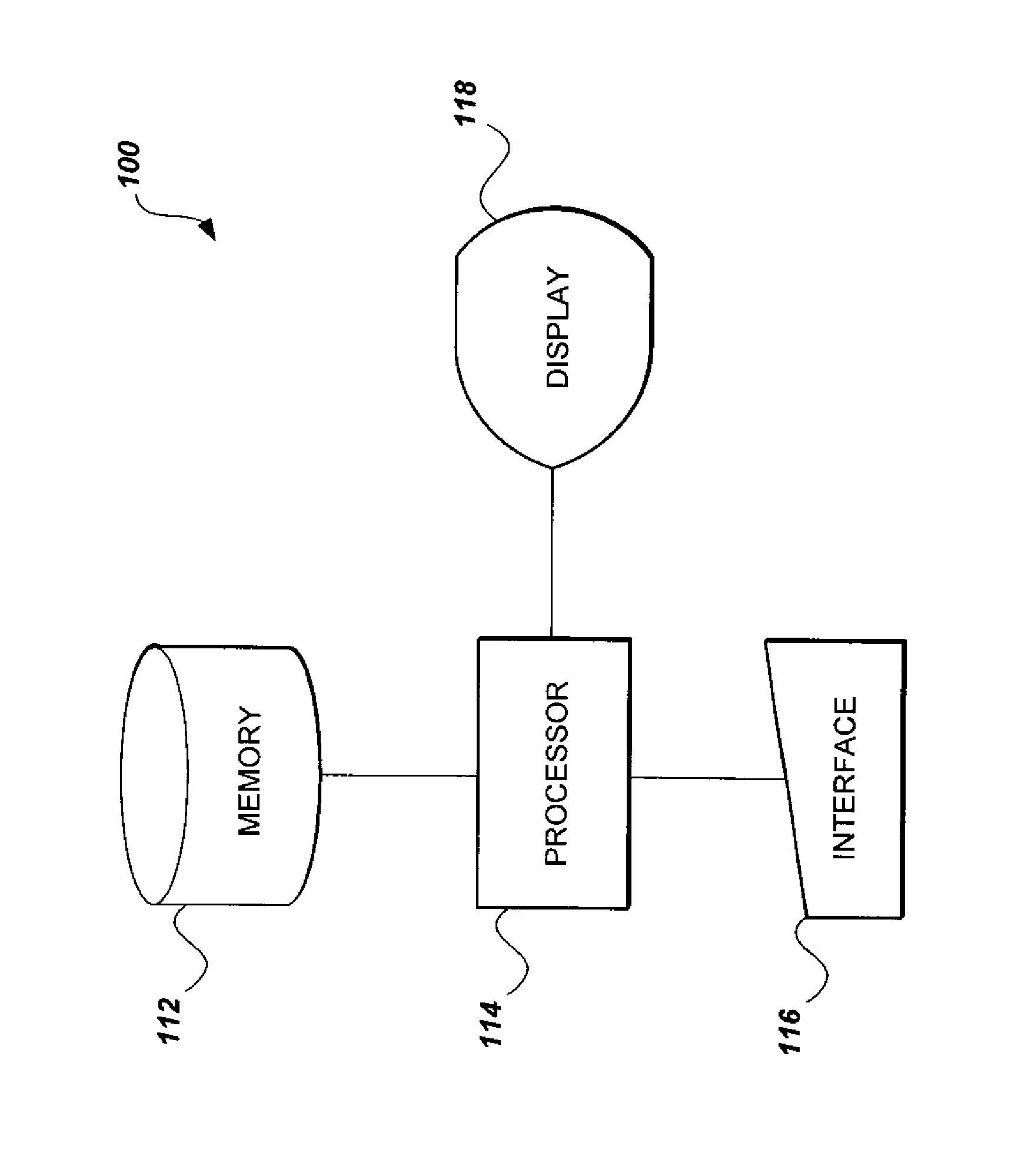RNS-based cryptographic system and method
a cryptographic system and cryptographic method technology, applied in the field of computerized cryptographic systems and methods, can solve the problems of computationally difficult problems, computationally difficult problems, and more difficult problems, and achieve the effect of blind factorization even mor
- Summary
- Abstract
- Description
- Claims
- Application Information
AI Technical Summary
Benefits of technology
Problems solved by technology
Method used
Image
Examples
example 1
[0046]In a first embodiment, the sending and receiving correspondents both perform the following: (a) agreeing on a set of elements {p1, p2, . . . , pL}, where L is an integer greater than or equal to one, where the elements {p1, p2, . . . , pL} are relatively prime with respect to one another and form a part of a shared secret, and which are further used as a residue number system basis β given as β={p1, p2, . . . , pL}; (b) agreeing on an integer klεZpl for each element pl, where l=1, . . . , L, where each kl forms a part of the shared secret; (c) agreeing on an integer glεZpl for each element pl, where l=1, . . . , L, such that mod pl exists, such that the integers gl could be part of a shared secret key or could be made public. The integers gl may also be chosen such that gi=gj for i=1, . . . , L and j=1, . . . , L; and (d) agreeing on an upper limit for a number of bits to be used to represent a ciphertext.
[0047]The sending correspondent then performs the following: (e) embeddi...
example 2
[0057]In order to reduce the number of computational steps, one exponentiation key may be used. The sending and receiving correspondents both perform the following: (a) agreeing on a set of elements {p1, p2, . . . , pL}, where L is an integer greater than or equal to one, where the elements {p1, p2, . . . , pL} are relatively prime with respect to one another and form a part of a shared secret, and which are further used as a residue number system basis β given as β={p1, p2, . . . , pL}, and wherein pmax=Max(p1, p2, . . . , pL), where Max represents a maximum value operation, and lmax=l for l=1, . . . , L, where pmax=pl; (b) agreeing on an integer kl⊖Zpl where k forms a part of the shared secret; (c) agreeing on an integer g⊖Zpmax where it is preferable that √{square root over (g)}⊖ / Zpmax, such that the integer g could be part of a shared secret key or could be made public; and (d) agreeing on an upper limit for a number of bits to be used to represent a ciphertext.
[0058]The sending...
example 3
[0060]In this variation, flexibility is added in the changing of the encryption keys and the initialization phase is simplified: the sending and receiving correspondents both perform the following: (a) agreeing on a set of elements {p1, p2, . . . , pL}, where L is an integer greater than or equal to one, where the elements {p1, p2, . . . , pL} relatively prime with respect to one another and form a part of a shared secret key, and which are further used as a residue number system basis β given as β={p1, p2, . . . , pL}, and wherein pmax=Max{p1, p2, . . . , pL}, where Max represents a maximum value operation, and lmax=l for l=1, . . . , L, where pmax=pl; and (b) agreeing on an upper limit for a number of bits to be used to represent a ciphertext.
[0061]The sending correspondent then performs the following: (c) embedding message bit strings into L integer values ml, where l=1, . . . , L and lmax≠l, such that 0≦mll for l=1, . . . , L; (d) selecting an integer k⊖Zpmax; (e) selecting an i...
PUM
 Login to View More
Login to View More Abstract
Description
Claims
Application Information
 Login to View More
Login to View More - R&D
- Intellectual Property
- Life Sciences
- Materials
- Tech Scout
- Unparalleled Data Quality
- Higher Quality Content
- 60% Fewer Hallucinations
Browse by: Latest US Patents, China's latest patents, Technical Efficacy Thesaurus, Application Domain, Technology Topic, Popular Technical Reports.
© 2025 PatSnap. All rights reserved.Legal|Privacy policy|Modern Slavery Act Transparency Statement|Sitemap|About US| Contact US: help@patsnap.com



